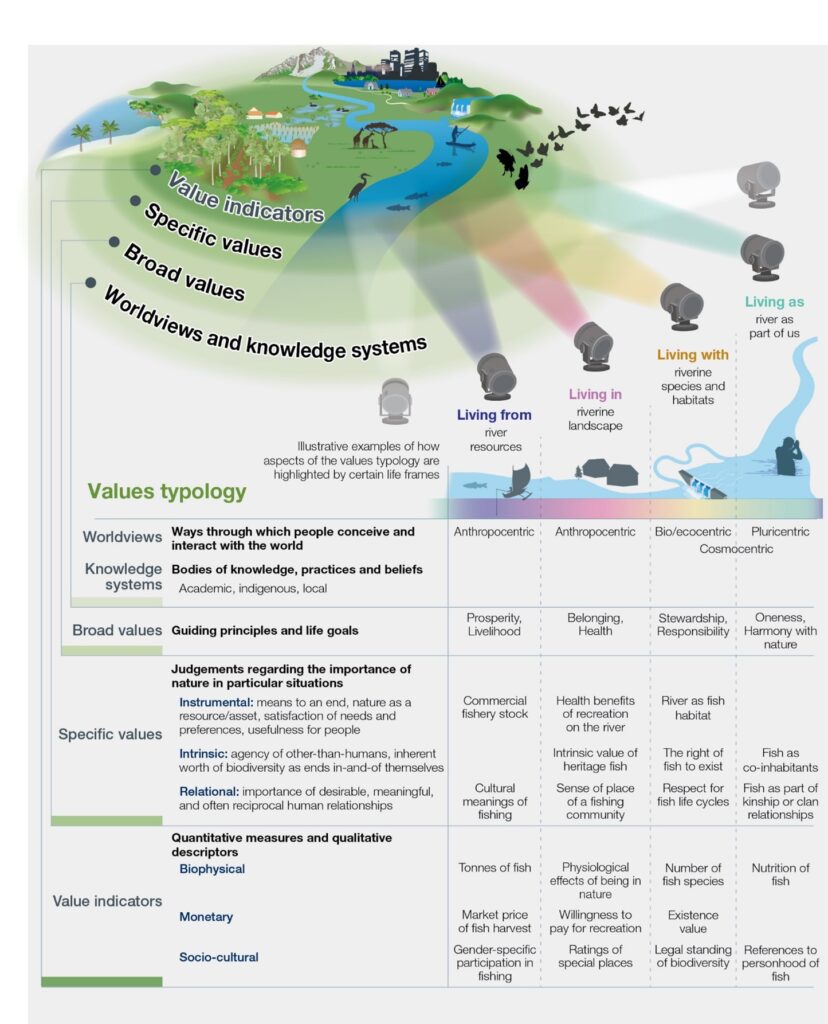IPBES Values Assessment: The diverse values of nature are overlooked in political and economic decision-making
On Monday the 11th July 2022, the Intergovernmental Science-Policy Platform on Biodiversity and Ecosystem Services (IPBES) published the Values Assessment Summary for Policy Makers. The report explores the diverse values of nature and how they are considered in political and economic decisions and brings together 82 top scientists and experts from every region of the world. It is based on a large review conducted by experts in social science, economics and the humanities, and draws on more than 13,000 references – including scientific papers and information sources from indigenous and local knowledge.
Professor Christopher Raymond, Coordinating Lead Author of the Values Assessment and Professor of Sustainability Science, Helsinki Institute of Sustainability Science (HELSUS), University of Helsinki, here presents an overview of some of the headline messages. Professor Raymond is a member in the Finnish Nature Panel, an independent panel of scientific experts that supports nature and biodiversity policy planning and decision-making in Finland.
The values assessment found that decisions based on narrow set of market values of nature underpin the global biodiversity crisis. Economic and political decisions have predominantly prioritised certain values of nature, particularly instrumental values that are assessed or traded through markets, such as those associated with food produced intensively. These market values do not adequately reflect how nature contributes to people’s quality of life.
Also, issues of environmental and social justice are often overlooked in environmental valuation. The most prominent focus of recent (2010-2020) valuation studies has been on improving the condition of nature (65% of valuation studies reviewed) and on improving people’s quality of life (31%), with just 4% focused on improving issues around social justice. Only 2% of the more than 1,000 studies reviewed consult stakeholders on valuation findings and only 1% of the studies involved stakeholders in every step of the process of valuing nature.
However a more diverse set of values exist. These include intrinsic values referring to the inherent worth of biodiversity, and relational values associated with desirable relationships with nature including the cultural meanings associated with berry picking with family and friends in the forest. To help policymakers better understand the very different ways in which people conceive and value nature, the report provides a novel and comprehensive typology of nature’s values (Figure SPM 2). The typology highlights how nature is valued differently across worldviews and knowledge systems, and provides examples of different types of values that act as guiding principles in one’s life (broad values) and those values which are related to particular contexts (specific values). It also gives examples of the different ways in which these values can be measured (value indictors) and provides a set of life frames – a way of communicating and organising how people draw upon different types of values in specific contexts. These are: living from, with, in and as nature. Living from nature emphasizes nature’s capacity to provide resources for sustaining livelihoods, needs and wants of people, such as food and material goods. Living with nature has a focus on life ‘other than human’ such as the intrinsic right of fish in a river to thrive independently of human needs. Living in nature refers to the importance of nature as the setting for people’s sense of place and identity. Living as nature sees the natural world as a physical, mental and spiritual part of oneself.

Figure SPM 2 from the IPBES Values Summary for Policy Makers showing the comprehensive typology of values. The figure illustrates different value types and dimensions (worldviews, broad and specific values and value indicators). Life frames are not mutually exclusive; individuals or groups can hold multiple frames. Metaphorically, they are light beams that cut across value categories. Examples are highlighted of some values that might be given prominence in the context of a freshwater ecosystem.
There is no shortage of ways and tools to draw upon the multiple values of nature in decision-making. The authors identify four values-centred ‘leverage points’ that can help create the conditions for the transformative change necessary for more sustainable and just futures:
- Recognizing the diverse values of nature
- Embedding valuation into decision-making
- Reforming policies and regulations to internalize nature’s values
- Shifting underlying societal norms and goals to align with global sustainability and justice objectives
The IPBES Values Assessment is ideally timed to inform the Parties to the Convention on Biological Diversity on a new global biodiversity framework for the next decade, which will occur in Montreal, Canada in December 2022.
